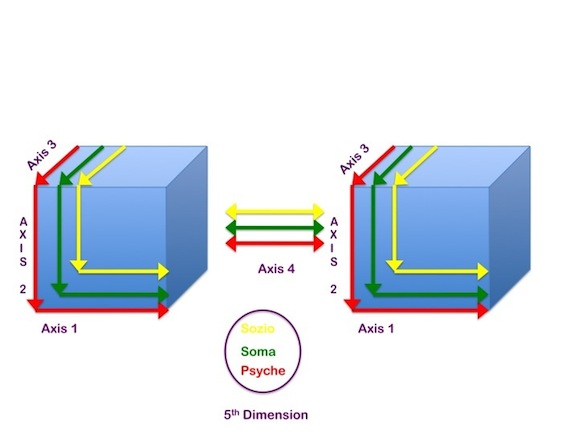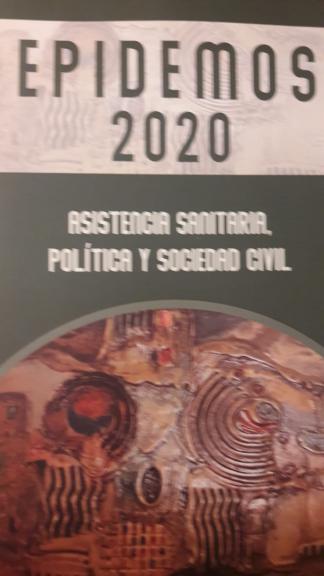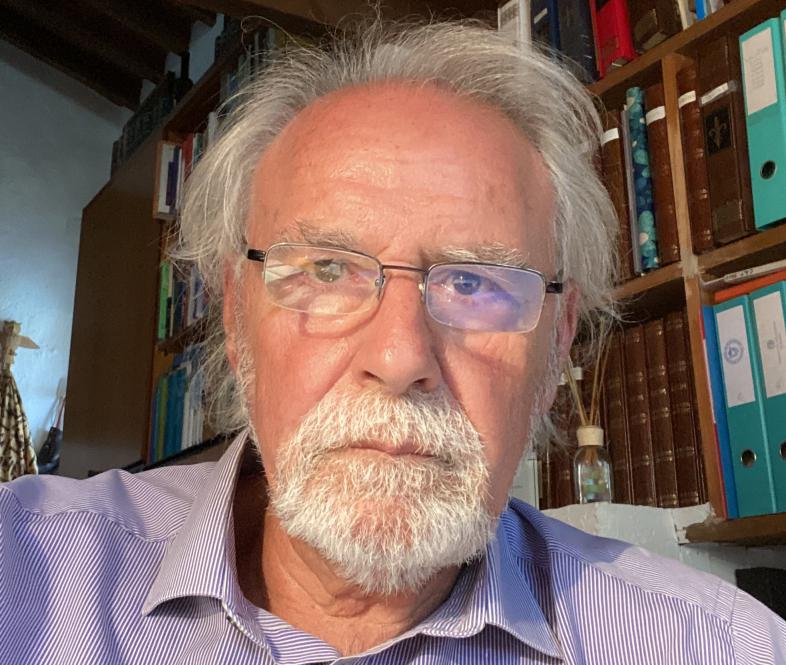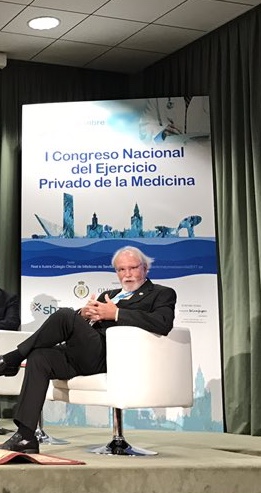
SPI-5D®
EXCELLENCE IN DOCTOR – PATIENT RELATIONSHIP
EXAMPLE : SPI-5-D® AND INVASIVE CORONARY DIAGNOSTICS AND THERAPY TECHNOLOGY

Excellence in practicing the doctor – patient relationship during coronary diagnostic and therapeutic process is creating in the patient a relation-based 5-D structure of security, singularity and affiliation.
This is achieved by: Before the intervention: Sending the date, time and place of the intervention, a questionnaire on medical anamnesis, information on the risks of the intervention, announcement of a detailed preliminary discussion with the treating physicians and a form for signing the intervention after the discussion. On the day of the intervention: Personal greeting and introducing themselves of all members of the treatment team (this includes everyone from the reception at the entrance to the actual treatment team to the patient transport), explaining their own role in the treatment process, a detailed preliminary talk with the treating doctor. Signing the authorization of the intervention. Advance directives, explaining each individual preparation and treatment step before it is carried out, continuously explaining alternative options and their preparation before the start of the intervention, brief, clear and targeted communication among the members of the treatment team during the intervention, explaining of the continuously received diagnostic results and brief notes on upcoming therapeutic steps. Explaining the end of the intervention, announcing the final discussion with the doctors (assistant doctor and senior doctor). Preparation and return to the ward for follow-up care, 6-hour follow-up control and mobilization, having a final discussion with the doctors, catering and preparation for leaving.
What happens inside the patient as a momentary and lasting experience structure is 5-dimensional and fulfills his 3 basic human needs in all 5 dimensions, which are 1. Security 2. Uniqueness 3. Belonging. Each of these basic needs expresses itself 3-dimensionally: 1. somatic 2. psychological 3. social.
The coherence between somatic-psychological-social is the 5th dimension in the SPI-5-D® model. Axis 4 in the SPI-5D® model is the relationship axis. Axis 3 is the focusing axis. Axis 2 is the depth axis. Axis 1 is the temporal development axis.
The initially described and required criteria for excellence in the doctor-patient relationship meet all the criteria of the 3 basic needs of the patient in all 5 dimensions. Only when all of this is the case can we speak of excellence and top-class medicine. It is therefore a matter of involving the whole patient in the medical process and getting involved with the whole person of the patient on the part of the medical team, psychologically, somatically and socially. Only in this way can the notorious “compliance” come about and an optimal diagnostic and therapeutic result can be achieved.
EXZELLENZ IN DER ARZT – PATIENT – BEZIEHUNG
BEISPIEL : SPI – 5-D® UND INVASIVE KORONARDIAGNOSTIK UND THERAPIETECHNIK
Exzellenz in der Praxis der Arzt– Patient - Beziehung während der invasiven Koronardiagnostik und -therapie schafft eine beziehungsbasierte 5-D-Struktur der Sicherheit, der Einzigartigkeit und Zugehörigkeit im Patienten.
Dieses wird erreicht durch : Vor der Intervention : Zusenden von Datum, Uhrzeit und Ort der Intervention, Fragebogen zu medizinischer Anamnese, Information zu den Risiken der Intervention, Ankündigung eines ausführlichen Vorgesprächs mit den behandelnden Ärzten und Formular zur Unterzeichnung der Intervention, nach Abschluss der Besprechung. Am Tag der Intervention : Persönliches Begrüssen und sich vorstellen aller Mitglieder des Behandlungsteams, ( dazu gehören alle vom Empfang am Eingang, über das eigentliche Behandlungsteam bis zum Patiententransport ), erklären der eigenen Aufgabe im Behandlungsprozess, ausführliches Vorgespräch mit dem behandelnden Arzt. Unterzeichnen der Autorisierung der Intervention. Patientenverfügung, erklären jedes einzelnen Vorbereitungs- und Behandlungsschrittes vor dessen Durchführung, fortwährendes erklären von alternativen Möglichkeiten und deren Vorbereitung vor Anfang der Intervention, kurzes, klares und gezieltes Kommunizieren unter den Mitgliedern des Behandlungsteams während der Intervention, erklären der fortlaufend erhaltenen diagnostischen Resultate und kurze Hinweise auf bevorstehende therapeutische Schritte. Erklären der Beendigung der Intervention, Ankündigung des abschliessenden Gesprächs mit den Ärzten ( Assistenzarzt und Oberarzt ). Vorbereitung und Rückführen auf die Station zur Nachpflege, 6-stündige Nachkontrolle und Mobilisierung, Abschlussgespräch mit den behandelnden Ärzten, Verpflegung und Vorbereiten des Austrittes.
Was dabei passiert im Innern des Patienten als momentane und bleibende Erfahrungsstruktur ist 5-dimensional und erfüllt in allen 5 Dimensionen seine 3 menschlichen Grundbedürfnisse, die da sind 1. Sicherheit 2. Einzigartigkeit 3. Zugehörigkeit.
Jedes dieser Grundbedürfnisse drückt sich wiederum 3-dimensional aus : 1. somatisch 2. psychisch 3. sozial.
Die Kohärenz zwischen somatisch-psychisch-sozial ist die 5.Dimension im Modell SPI-5-D®. Die Achse 4 im Modell SPI-5D® ist die Beziehungsachse . Achse 3 ist die Fokussierungsachse. Achse 2 ist die Tiefenachse. Achse 1 ist die zeitliche Entwicklungsachse.
Die Eingangs beschriebenen und geforderten Kriterien zur Exzellenz in der Arzt-Patient-Beziehung erfüllen alle Kriterien der 3 Grundbedürfnisse des Patienten in allen 5 Dimensionen.
Nur wenn all dies der Fall ist, kann von Exzellenz und Spitzenmedizin gesprochen werden. Es geht also darum, den ganzen Patienten in den medizinischen Prozess einzubeziehen, und sich seitens des medizinischen Teams auf den ganzen Menschen einzulassen, psychisch-somatisch und sozial. Nur so kann sich die berühmt-berüchtigte «compliance « einstellen und ein optimales diagnostisches und therapeutisches Resultat erzielt werden.
SPI-5-D® ( five-dimensional ) endoscopy and navigation technology for psychiatry, psychotherapy, therapeutic coaching and psychosomatic medicine.
Abstract
Background : The concept of health is defined according to WHO as a psycho-somatic-social wellbeing. Each of these three fields has developed in medicine, the sector’s own diagnosis, therapy and forecasting processes. A cross-sector understanding and for the healing process essential integration often proves difficult in the absence of an integrated navigation system.
Objective : To close this gap and thus to provide the practitioner and the patient orientation, support, quality and safety, our institute aimed to develop, according to the WHO definition of health, an integrated navigation system, that should allow sharp diagnostic, therapeutic and forecasting processes in all three areas simultaneously.
Issue : We asked ourselves whether, how and what of already existing technologies would be possible to integrate into such a navigation system, and how, where and when each of the technologies should come into play.
Procedure : We assumed that this would be best achieved if we started with our own field, the mental one, developed the dimensions one after another, matching relationships between them and proceded only in a second step to the next field, namely the somatic one, integrating it to the multi-dimensional structure of the mental health. From our long experience we knew that the human psyche as the human body is three dimensional, but we had up to then not named the tree axes and not attributed to diagnostic and therapeutic techniques, and above all we did not have the axes assembled together.
In a third phase, we would join the three social axes to our 3-D navigation system. As an illustrative model, we would use the cube model.
Description : The mental cube consists of axis 1 ( horizontal ) on which we move from left to right, along the time evolution and maturity with its distinctive phases ( autistic, symbiotic, paranoid, schizoid, altruistic-narcisstisic, selfish-narcissistic, borderline, and last of all to the far right, the phase of internal object constancy ). Diagnostically to guide us along this axis are the classifications according to J.F.Masterson, the diagnostic manuals ICD and DSM, as well as classifications from developmental psychology.
Axis 2 ( vertical ) shows from bottom to top the level of awareness that a person has about his or her mental health and developmental situation. Diagnostically and therapeutically Psychoanalysis and Psychoanalytic Psychotherapy will guide us on this axis.
Axis 3 ( horizontal perspective ) is the kind of focus that a person can set on the various issues of development. Diagnostically and therapeutically we are here in the field of cognitive behavioral therapy and neuro linguistic programming NLP. Now, this 3-D navigation system is for both the patient and for the therapist. Both are to each other in a therapeutic relationship, what constitutes Axis 4 ( type of bond or attachment ) . On this axis we are diagnostically and therapeutically in the field of object attachment theory, with techniques of M.Mahler, Ainsworth, M. Balint, J.F. Masterson and others. This axis 4 is our real endoscope, through which we can perceive where the patient stands on the various three axis. Through this we also introduce our psychotherapeutic and coaching techniques and control how and where the effect of the intervention took place. This is very similar to the surgical endoscopy. Prerequisite of this technique is that the therapist knows his own axes and dimensions perfectly.
The somatic cube consists of : axis 1 ( horizontal ) from left to right, the somatic evolution of the person. Here we are in the field of embryology and anatomy. Axis 2 ( vertical ) from bottom to top, expresses the physiology of the human body. Here we are in the physiological control-loops. Axis 3 ( depth ) represents the chemical focus of the body. Here we are in the field of endocrinology and pharmacology. Axis 4 ( type of attachment ) expresses the physical coming into contact with another body. This includes also with inanimate bodies.
The social cube in turn consists of : axis 1 ( horizontal ) the phases of social development of the person with its known phases ( intrauterine, birth, infancy, early childhood etc until death ). Here we are in the range of descriptive developmental psychology. Axis 2 ( vertically ) from bottom to top, the depth of the social roots. Here we are in the field of sociology and education. Axis 3 ( focussing ) reflects the social focus of the person in life. This is the field of meaningfulness of life, of religiosity and of ethics, as well as philosophy.
Axis 5 is more tan an axis, it is rather a dimension, namely the superposition of the psychological, somatic and social cube. On this fifth dimension, the WHO’s definition of health is based. Here it becomes clear how und where any health problem is located and how it is diagnosed and treated according to the WHO’s definition.
Basic assumptions : Illness is for us not defined as presence of one or more symptoms, and personality disorder is not defined for us as a collection of certain personality traits. What characterizes disease, is getting stuck in a phase of development or a collection of symptoms. This means for people always a loss of inner freedom, on each of the four axes and also in the 5th dimension. The loss of inner freedom and entanglement in useless attemps to break out or to compensate are what make people sick.
Technology : Both , diagnosis and treatment, make use of the endoscope, i.e. the axis 4. By best knowledge of his own axes and dimensions the practicioner becomes an expert in the illumination of the different axes of the patient. Through his years of training and refinement of the intervention technique, he is an expert in medical psychotherapy, psychiatry and psychosomatic medicine. Each of the axes requires a specific technology that must be mastered, and they are specifically tuned to the phases on axis 1. Inappropriate technique can lead to iatrogenic injury. Advanced technical skills are an integral part of this 5-D endoscopy and navigation system. On the other hand, precisely because of this system, accumulated technical errors are detected immediately and razor-sharp and corrected.
Benefits : Thanks to this 5-D endoscopy and navigation technology disorders with a character of illness can be differentiated from those without. This allows to do either therapy with the consequent funding by health insurance, or coaching for further personality development, with the consequent funding from other sources. The concept of health by the WHO is applied with this technique in each individual intervention.
Results : In the two years we have used specific and daily this technique, we observed the following : faster and more accurate diagnosis and treatment, lower session frequency, shorter total duration, transparency and quality, increased safety for both patient and therapist, lower overall costs, no double – diagnoses and treatments, no treatment interruptions, flowing transition from therapy to coaching with a clear differentiation of the respective funding sources, rapid social reintegration, very low rate of chronicity. Thes results were sonfirmed repeatedly by the patients, the relatives and the referring physicians and institutions.
Conclusion : Since two years we are working at our institution with a 5-D Endoscopy and Navigation Technology that is simple and straightforward, which is tailored to the human structure, which is from a diagnostic and technical point of view razor-sharp, but requires high technical skills and experience from the practitioner, whithout which this technology would certainly not be developed.
Outlook : with increasing experience in the application of our technology encreases our expertise and efficiency, which leads to sustained improving of quality, safety and major cost-benefit ratio. As for the research, our technology opens new approaches, such as we have seen in the field of neuroscience and criminal law. Psychopaths seem to be therapeutically accesible only endoscopically ( axis 4 ) in the 5th dimension of axis 3 ( focusing ). Mentally they are focused on this axis to narcissistic ( axis 1 ) acting out their claim to rule and their hatred. Somatically they have been found to have decreased neurotransmitter in the amygdala ( chemical focus on axis 3 ) and socially they are focused to manipulation and destruction as the meaning of life ( philosphy focusing ). A 5-D integrated psycho-socio-educational and psycho-pharmacological approach involving a clear and solid structure from criminal law could be prepared and implemented for this serious mental disorder.
Extended application : As people live and work in structures and systems that were created by them, the structural elements of human psyche can be found within these social structures. The social structures have a life ot its own, and this in turn implies that such structures themselves are either healthy or sick. In the treatment of patients the sick elements of social structures in which they live and work , again and again come to the fore and must be treated. As in recent years, depression, anxiety, burnout conditions, but also the use of violence in connection with family, business, schools, neighborhood, etc. accumulate, our institute has put together interdisciplinary working groups, with the theme of health issues concerning : 1. Companies, organizations and systems , 2. Health systems, 3. education, pedagogy and school, 4. the music scene. In these groups we develop the 5-D technology for the specific field and identify opportunities to implement the results of our research.
Zofingen and Madrid , January 30 , 2012
_______________________________________________________________________________________________




